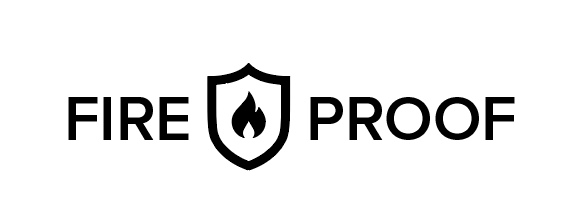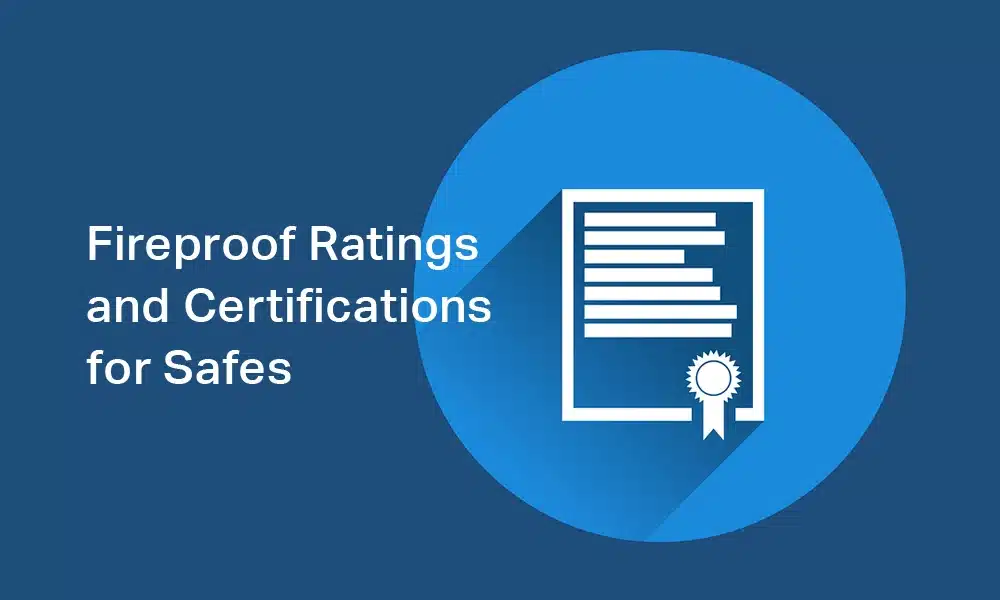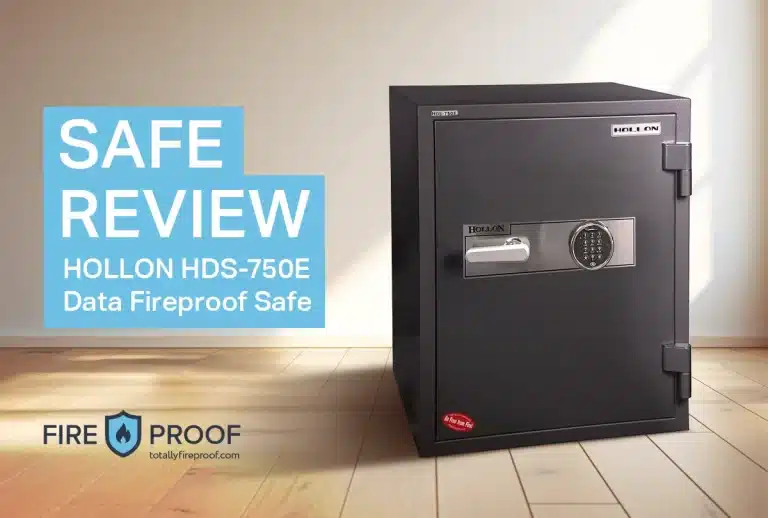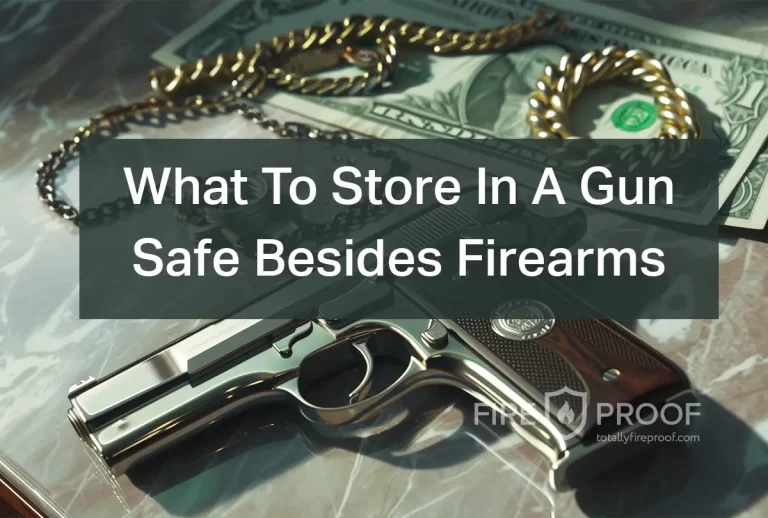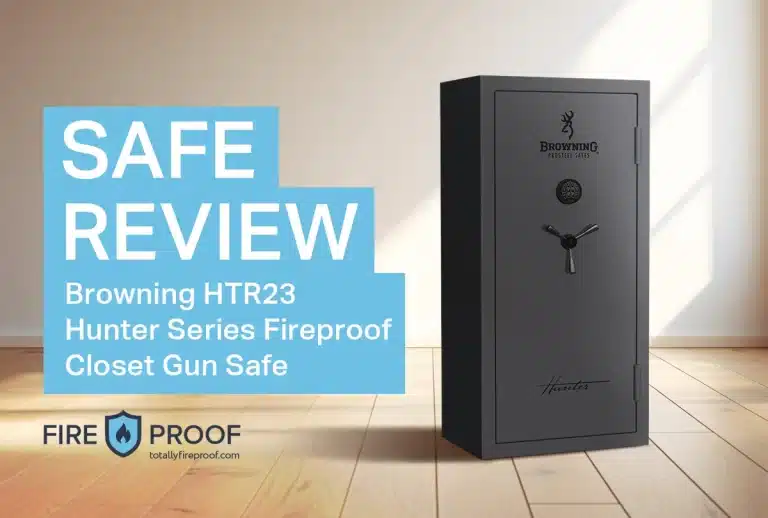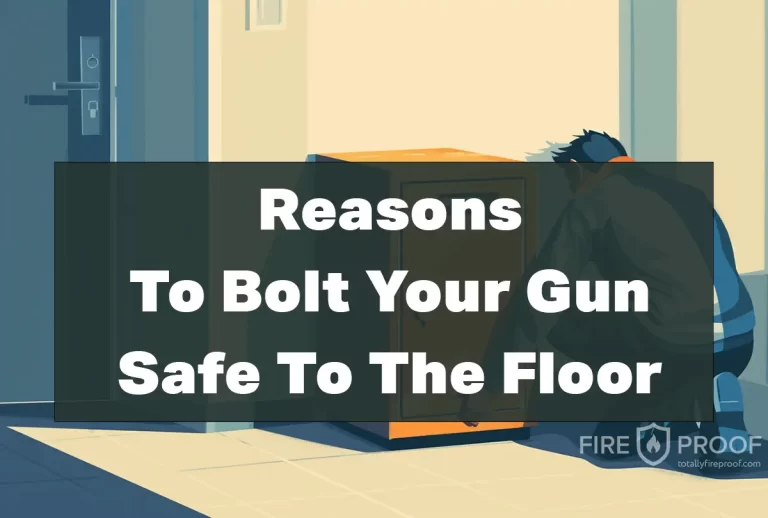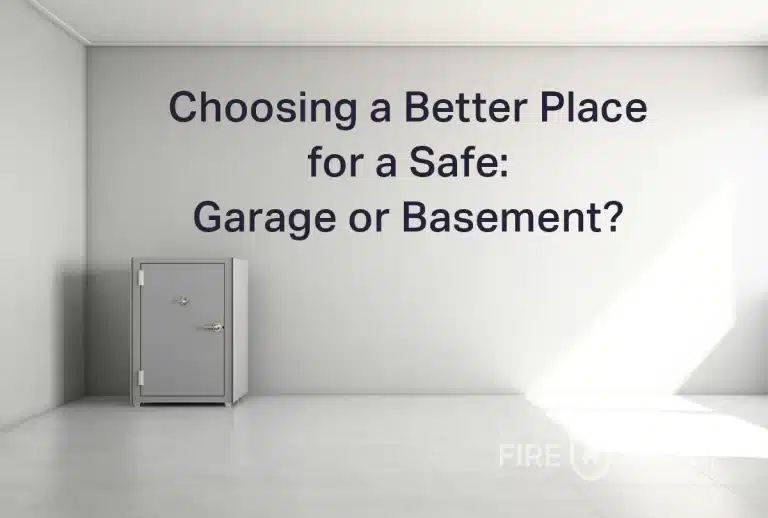Fire Ratings & Certification for Fireproof Safes Explained
Shopping for a fireproof safe can feel like navigating a maze, with an overwhelming range of models each boasting different features, reviews, ratings, and certifications. Wondering how to tell a genuinely fireproof safe from one that’s merely aesthetically pleasing? Look for its fire rating and certification.
Fire rating and certification validated by a reputable organization is a clear proof of a safe’s effectiveness in protecting your possessions against fire.
This guide offers clear insights on understanding fire ratings, the significance of certifications, and the testing process for fireproof safes.
What Fire Ratings and Certifications Are
Fire ratings and certifications are like a report card for fireproof safes, showing how well they can protect your items from heat and flames. These ratings are given based on tests that mimic real fire conditions. The better the rating, the longer the safe can keep your valuables safe during a fire. It’s a way to compare different safes and pick the best one for your needs. In short:
A fireproof rating is a measure that shows how long a safe can protect its contents during a fire.
The tests are conducted in accordance to specific standards. The standards are determined by:
- The organization that conducts fireproof testing.
- The country or region where the safe will be sold.
- The goal of the tests.
For example, if the fireproof safe is designed to protect paper documents, a certain standard is used for the tests. But if the safe is designed to protect magnetic tapes, a completely different standard will be applied for the tests. This means that fire ratings and certifications can vary greatly. And that’s where it may get confusing. But don’t worry, we have everything explained here.
Top Recognized Fire Ratings and Certifications
Now you know why there are so many fireproof ratings and certifications. How to determine which can be trusted?
Well, there are a couple internationally recognized organizations that actually do the fire testing and certification with accordance to a set of standards, and the results of these tests are globally recognized and respected.
These are three such widely recognized organizations:
- UL (Underwriters Laboratories): A global organization with a long history, that conducts fire-resistant tests and certifies various products including fireproof safes.
- ETL (Intertek Testing Services): A global organization that also does fireproofing tests and certifies safes based on the results. Just like UL, ETL also has several classifications for fireproof safes.
- CEN (European Committee for Standardization). CEN is a non-profit organization that develops voluntary standards for a wide range of products and services in Europe.
Notably, Japan and South Korea have their own reputable organizations—JMTCL and KTL, respectively. Although their certifications are primarily recognized within their national boundaries, the rigorousness of their testing processes earns them a notable level of international trust.
- JMTCL (Japan Machinery Testing Co., Ltd.) The organization conducts test by the Japanese Industrial Standard (JIS). The JIS for safes is JIS S 6026.
- KTL (Korea Testing Laboratory). An independent testing organization in South Korea.
Therefore, if you see that a safe has a fireproof rating given by one of these three globally recognized organizations UL, ETL, CEN you can trust the rating and consider that model as your potential choice.
What Do the Numbers in Fire Ratings Mean?
Let’s explore what these ratings and all the numbers actually mean. Because each organization has its own standards, the certification will look different.
UL Fire Ratings Explained
Starting with Underwriters Laboratories as one of the leaders in this industry. UL has several classifications for fireproof safes:
- Class 350 is meant for safes that are capable to protect paper from fires.
- Class 150 is meant for magnetic media
- Class 125 is mean for flexible computer disks
Each class has different levels of duration. Like 30 minutes, 1 hour, 2 hours, 3 hours or 4 hours.
For example, a fireproof safe rating UL Class 350 1-hour means that the paper inside such safe will not heat up above 350°F (177°C) for at least 1 hour in a fire.
A fireproof safe rating UL Class 150 1-hour means that a hard drive inside such a safe will not get damaged for at least 1 hours, as the safe will keep the inside temperature under the 150°F (65°C) for this duration.
125 in UL Class 125 fire rating stands for 125°F (52°C).
Here’s a detailed table that shows all the UL ratings, the standard used, the conditions tested and the protection provided to various types of valuables:
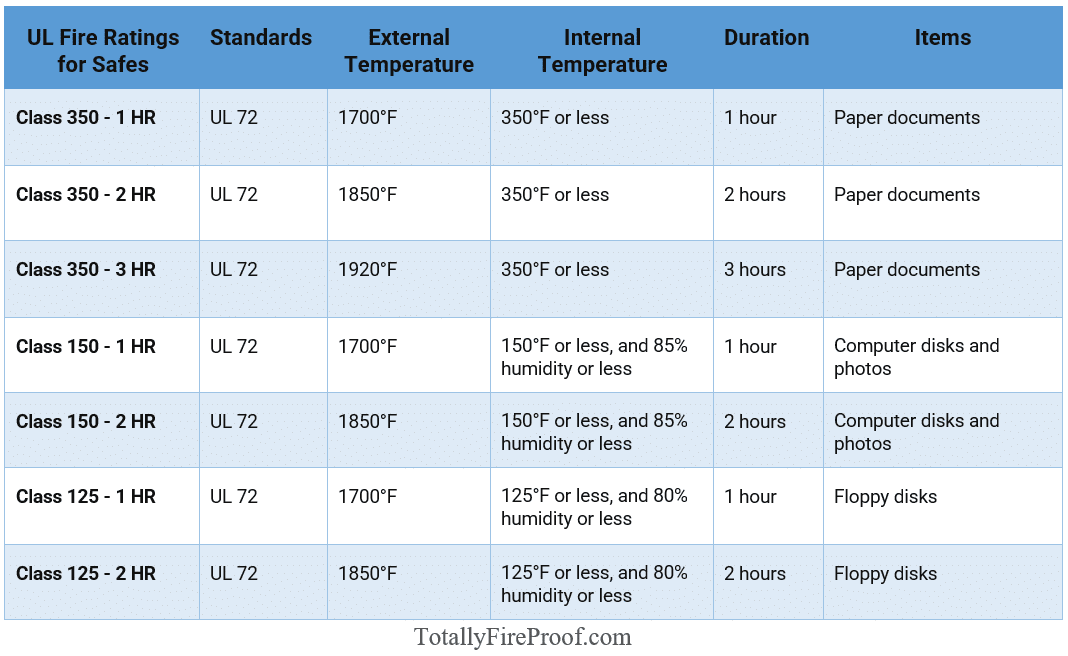
If you want to know more, check out this UL dedicated article on where we have UL (Underwriters Laboratories) Fireproof Ratings Explained
ETL Fire Ratings Explained
ETL has several classifications for fireproof safes as well:
- ETL Verified Fire Endurance (for paper)
- ETL Verified Fire Protection of Digital Media (for digital media)
- ETL Verified Water Resistance (for water exposure)
And each classification has different levels of duration. Like 30 minutes, 1 hour, or 2 hours.
For example, an ETL Verified Fire Protection of Digital Media 1-hour fireproof safe means that the safe can keep digital media below 350°F (177°C) for at least one hour in a fire.
Here is a detailed table that shows all the ETL ratings, the standard used, the conditions tested and the protection provided to various types of valuables:
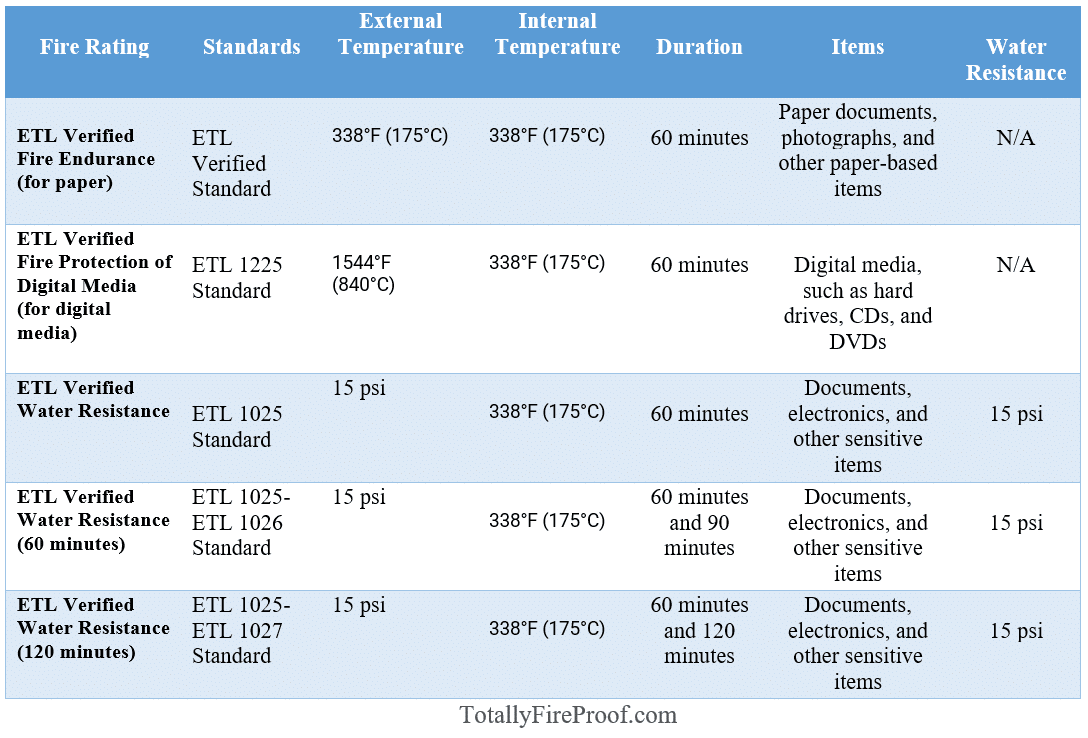
CEN Fire Ratings Explained
CEN often provides EI rating for fireproof and waterproof safes. They are tested by the EN 14450:2016 standard. Such EI rating is a combination of two ratings: the fire rating and the water resistance rating.
The fire rating is represented by the letter “E”, and the water resistance rating is represented by the letter “I”. The number following each letter shows the number of minutes the safe can withstand fire and water immersion.
For example, a safe with a rating of EI 60/90 can withstand a fire for 60 minutes and immersion in water for 90 minutes.
Here is a detailed table that shows all the ETL ratings, the standard used, the conditions tested and the protection provided to various types of valuables:
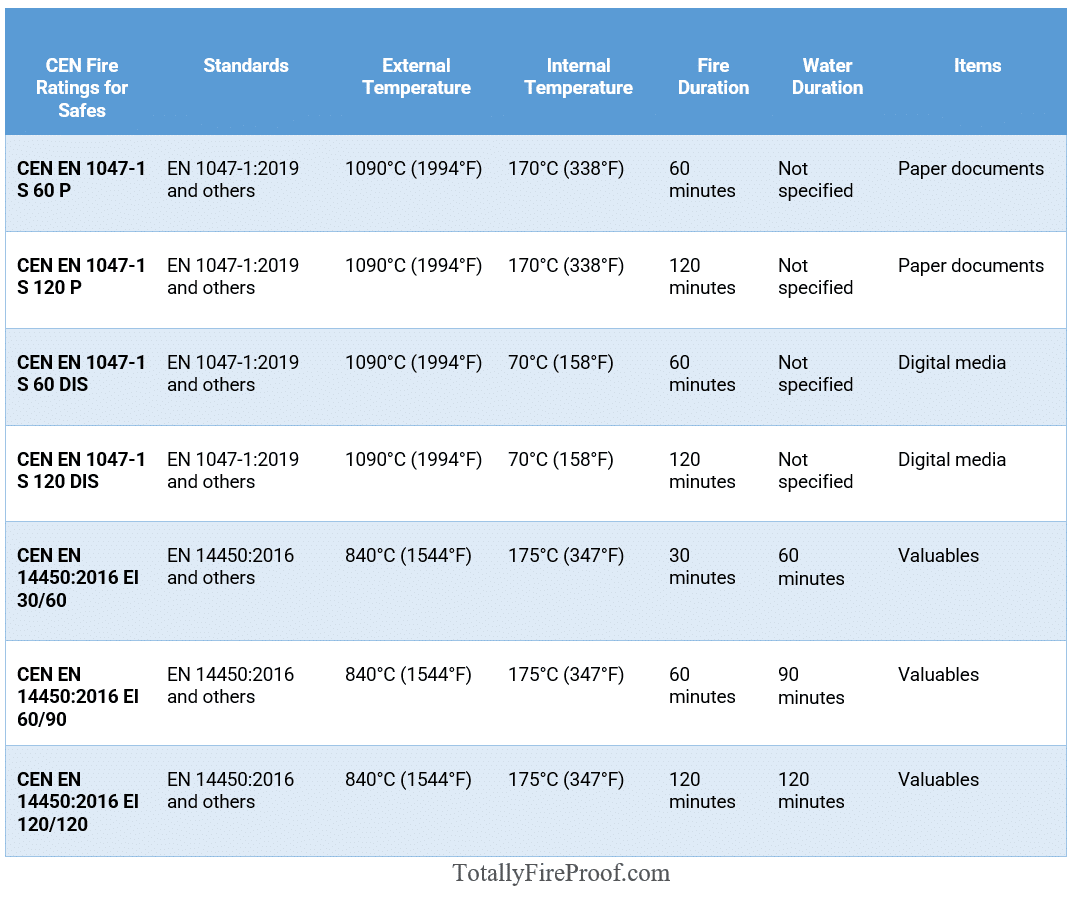
How Fireproof Safes Are Tested
Fireproof safes undergo a rigorous evaluation to confirm their effectiveness. They’re subjected to extreme conditions in special ovens, with temperatures reaching up to 2000°F (1093°C), far exceeding the heat of typical household fires. This process aims to mimic and even surpass real-life fire scenarios, ensuring the safes can protect their contents under the most severe conditions.
Various items, such as paper, cash, digital media, and jewelry, are placed inside the safes to represent common valuables. Throughout the test, which can last from 30 minutes to several hours, internal temperatures are closely monitored. The goal is to keep these temperatures below a set limit, ensuring the items inside remain undamaged.
If the safe maintains its internal temperature below this critical threshold and the contents are unaffected by the heat, the safe passes the test. This testing method establishes a safe’s specific fire rating.
The Importance of Fire Ratings for Safes
When picking out a fireproof safe, paying attention to fire ratings and certifications is key. These ratings offer a clear, unbiased measure of how well a safe can guard your valuables against fire. They’re like a stamp of approval showing the safe’s defense capabilities.
Fire ratings are also a great tool for comparing different safes, regardless of the brand. They let you know which safe is up to the task of protecting specific items like documents, electronic data, or jewelry from fire damage.
Double check safes that lack ratings from well-known and trusted organizations such as UL or ETL. A missing certification could signal that the safe might not live up to its fire protection promises. Unless the brand is trustworthy and you can rely on their own testing.
Conclusion
Fire ratings and certifications should be the Top factor when choosing a fireproof safe. Look for safes that were tested by well-known organizations and choose the one that provides the adequate level of protection to match your needs.
